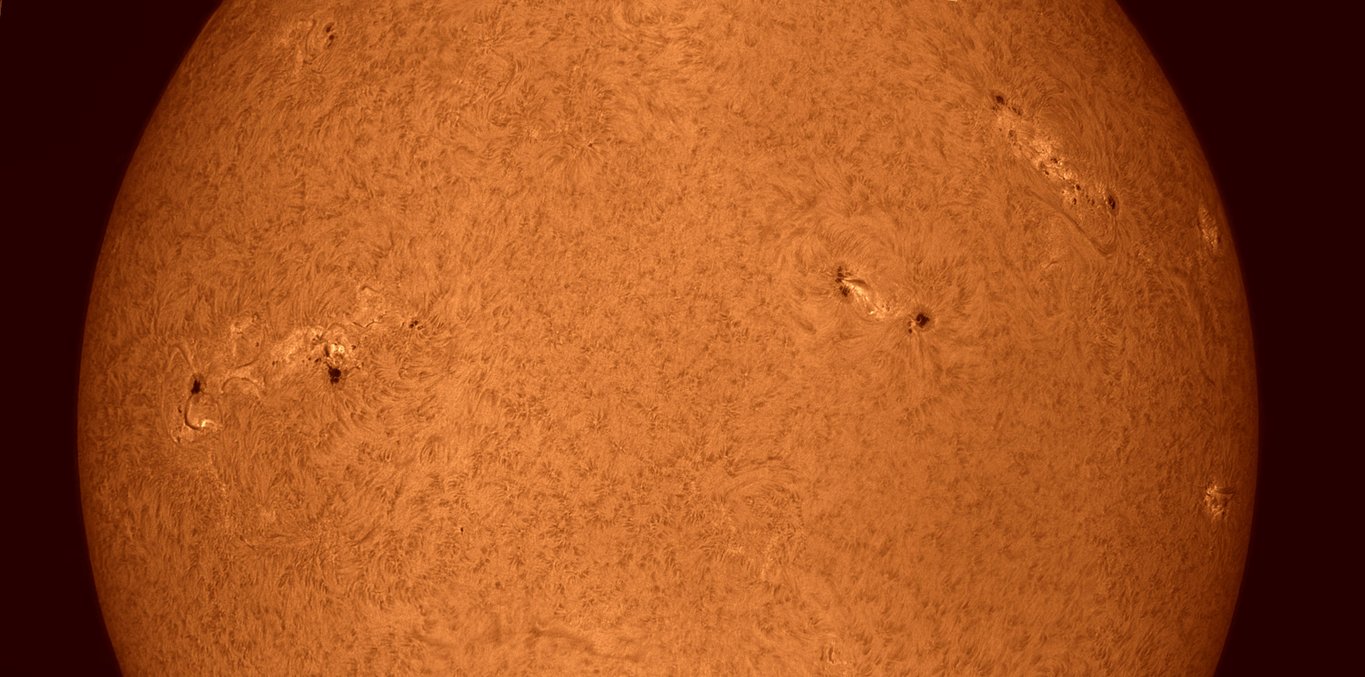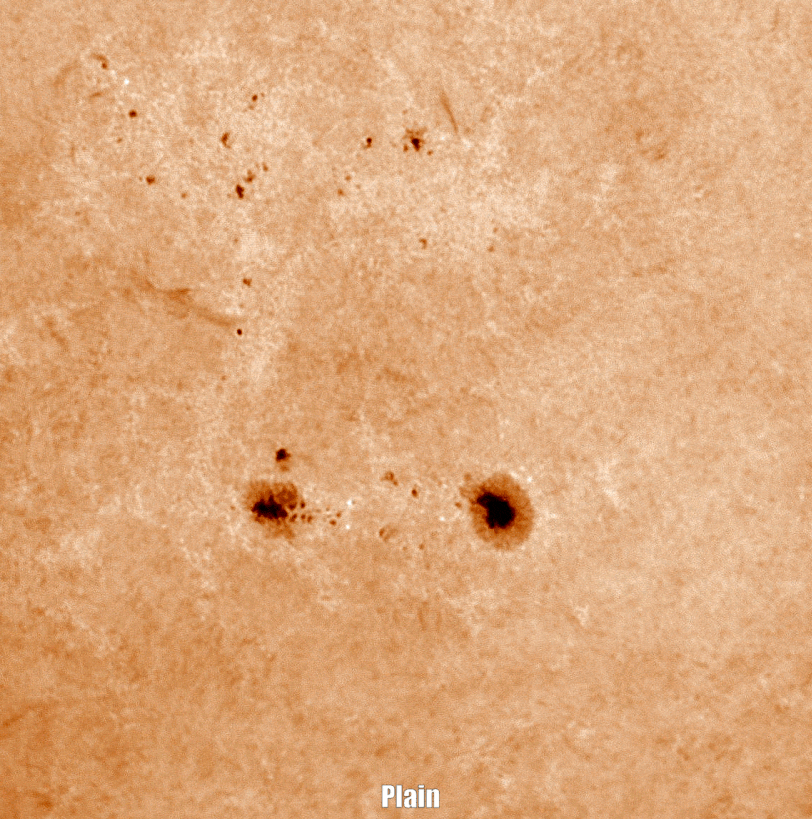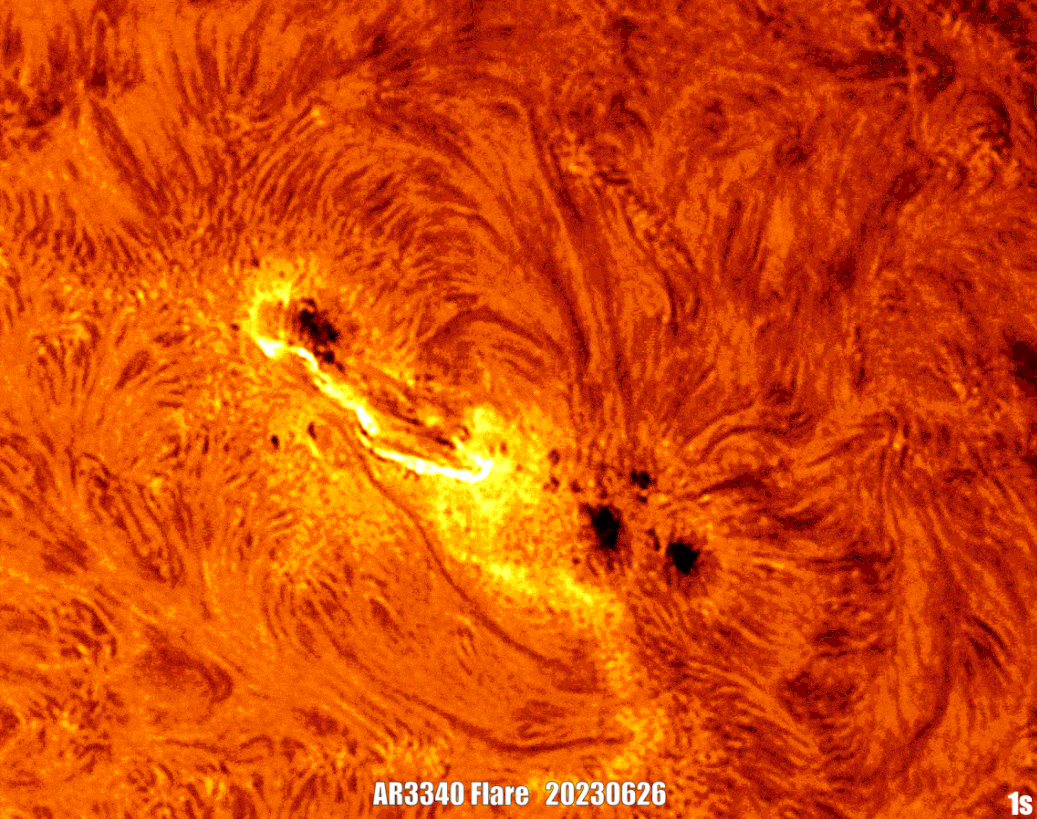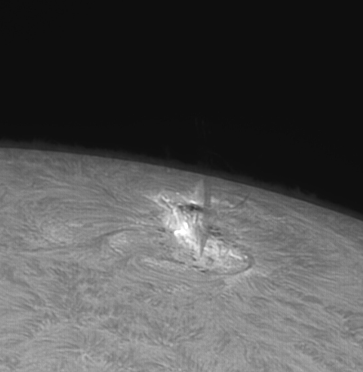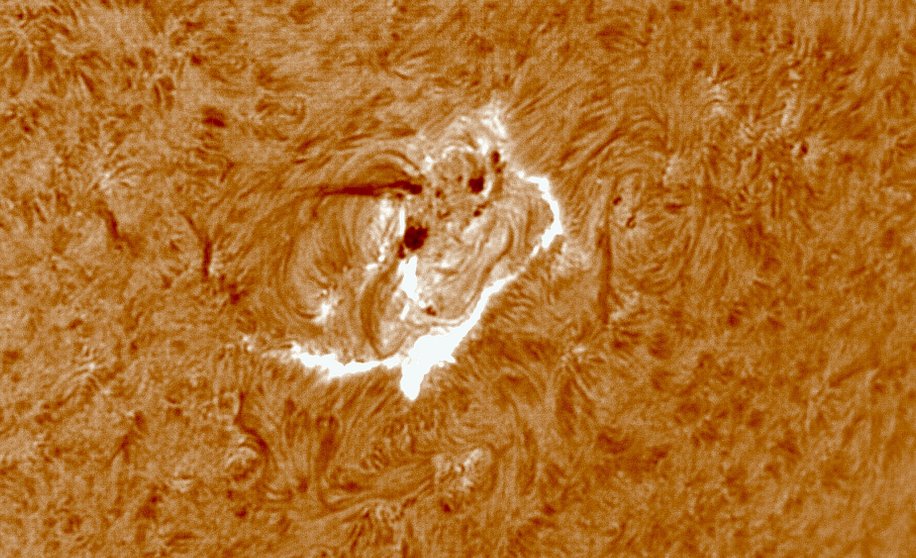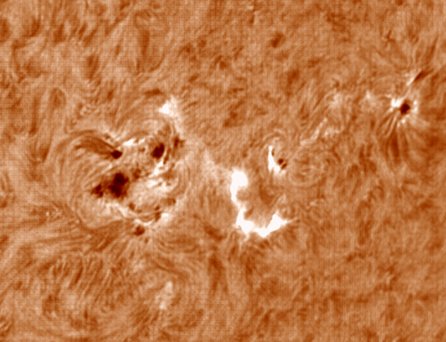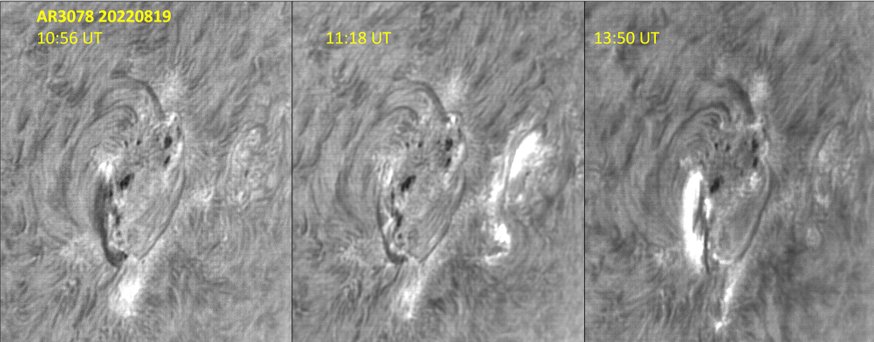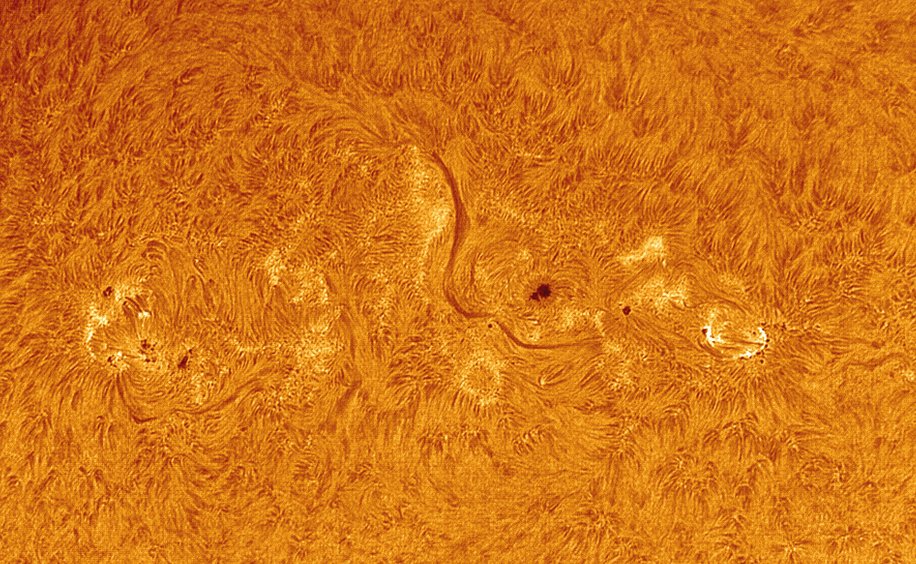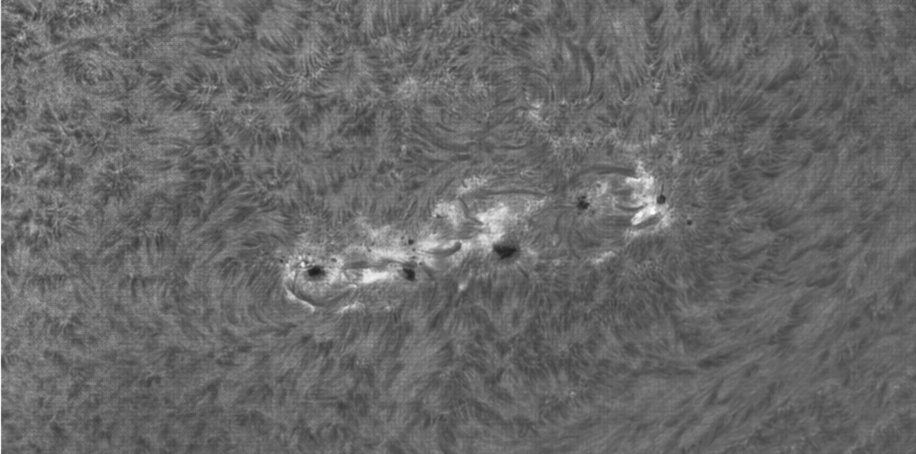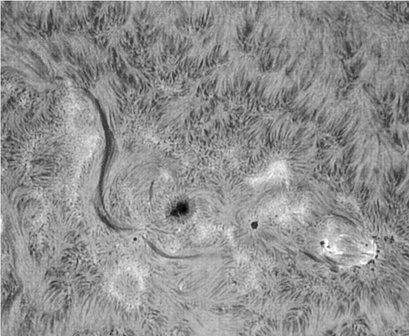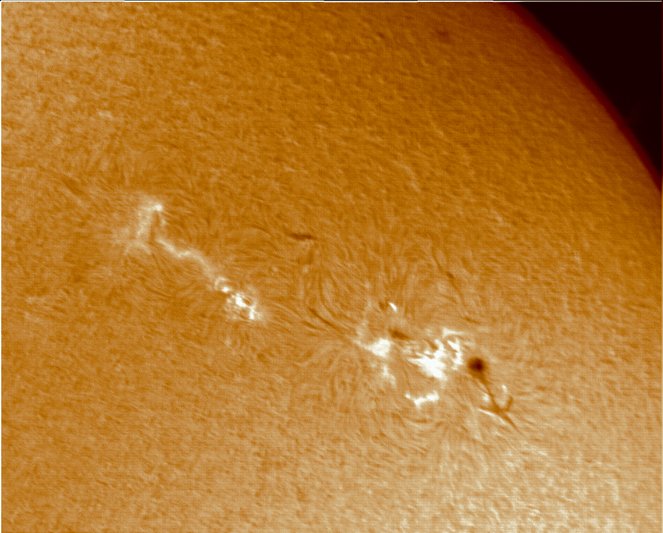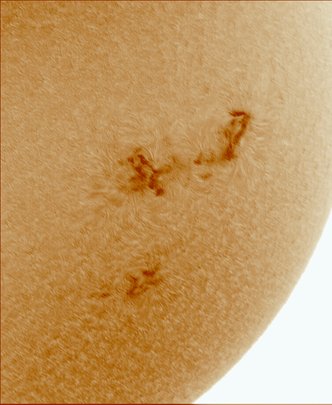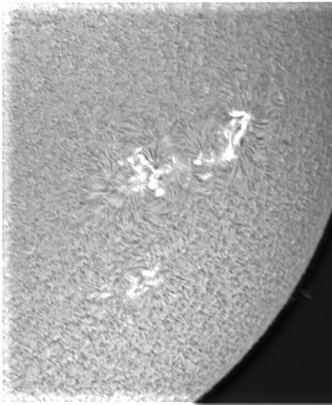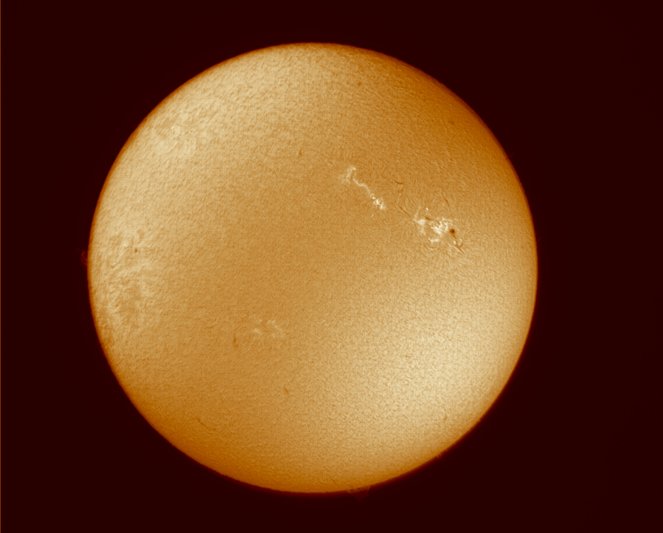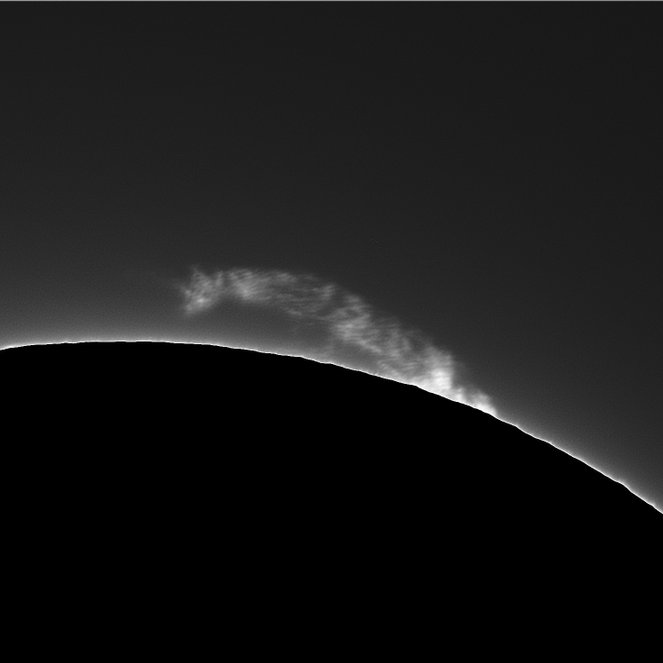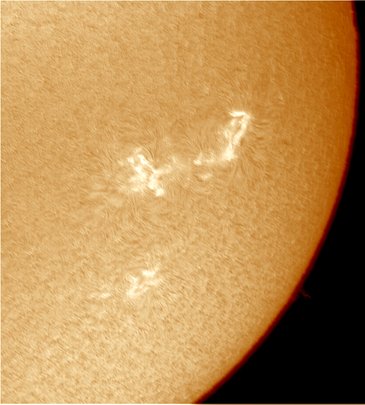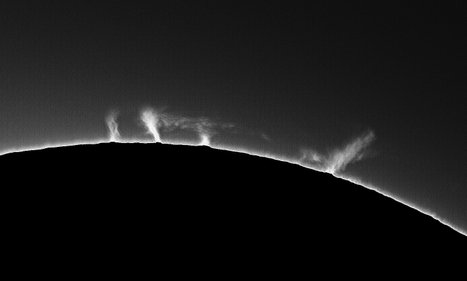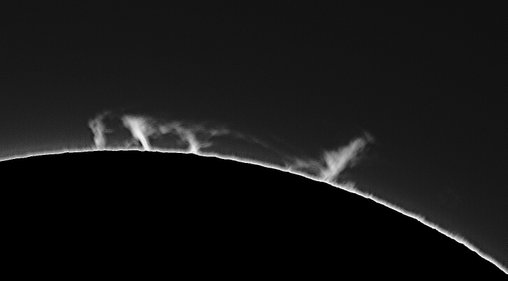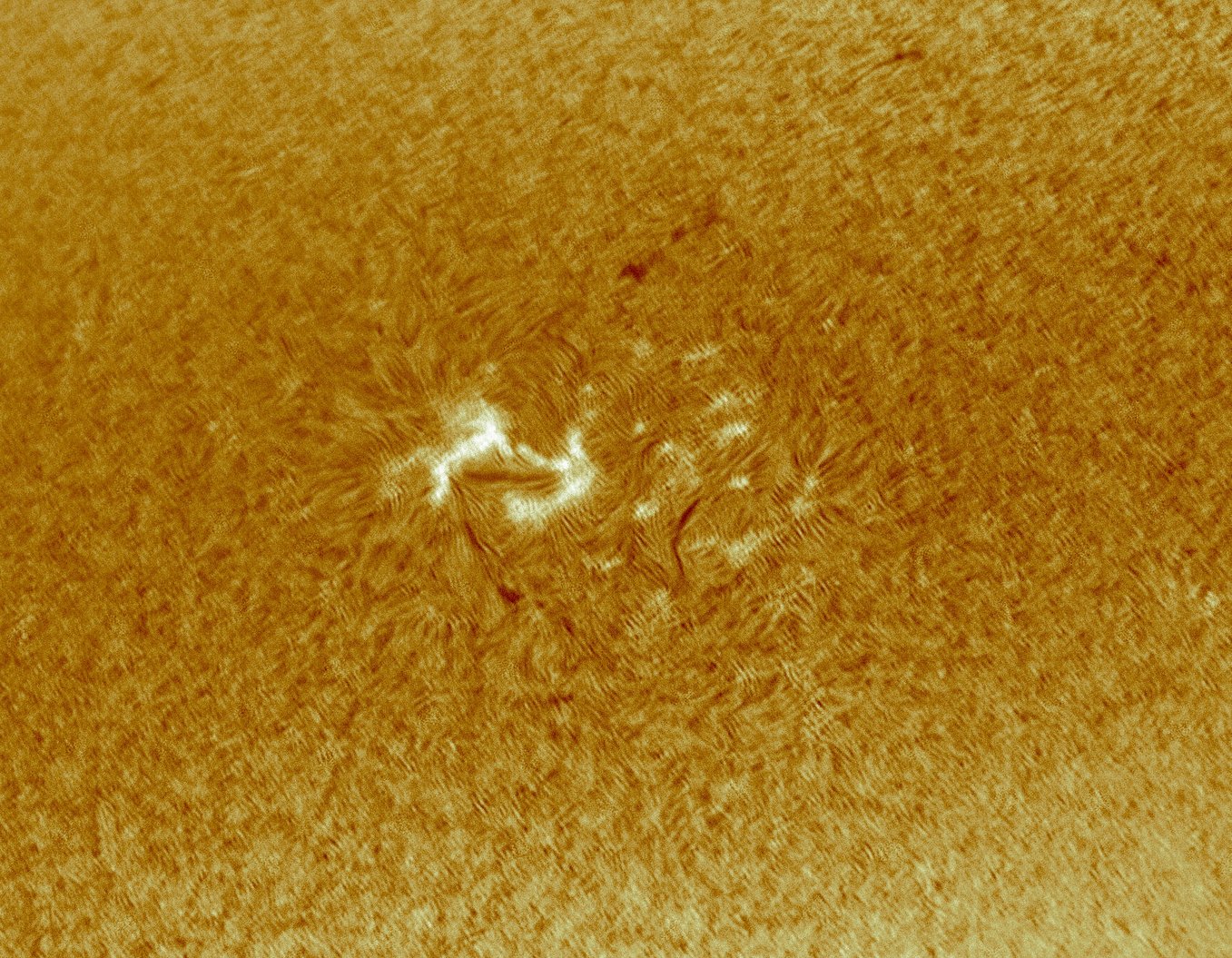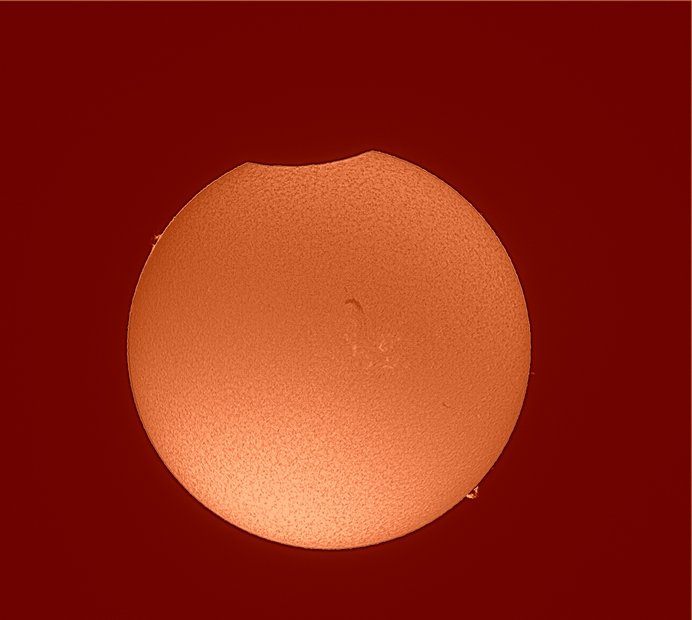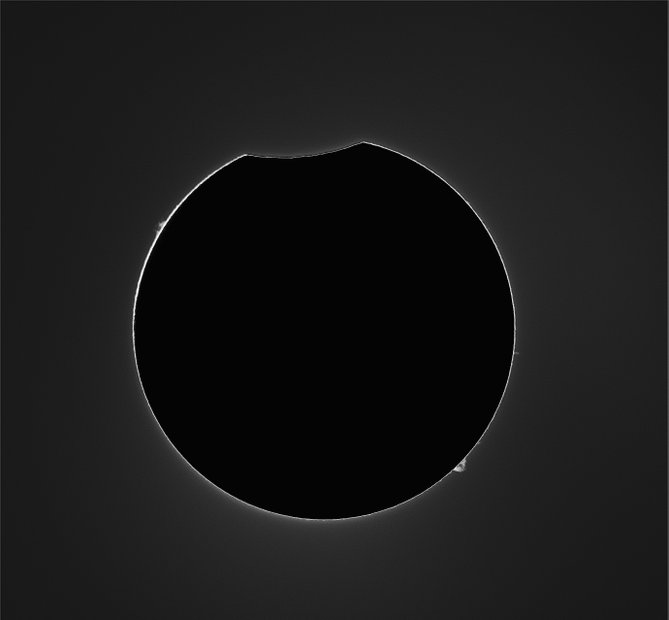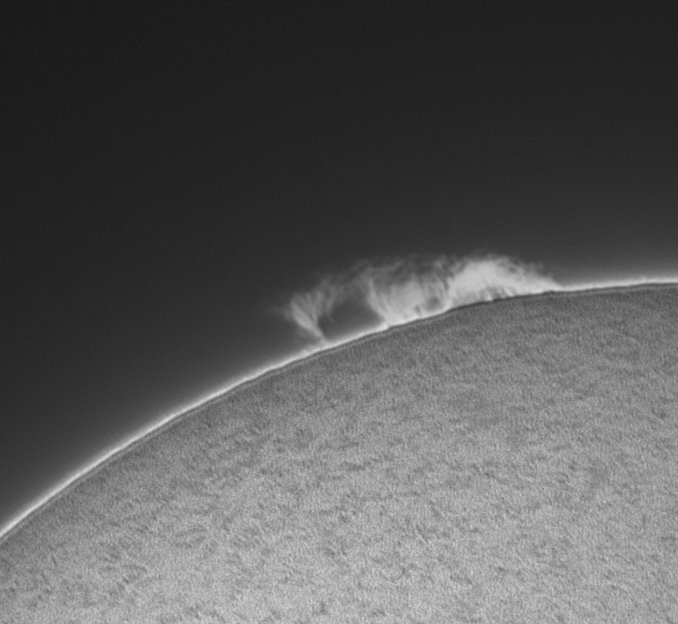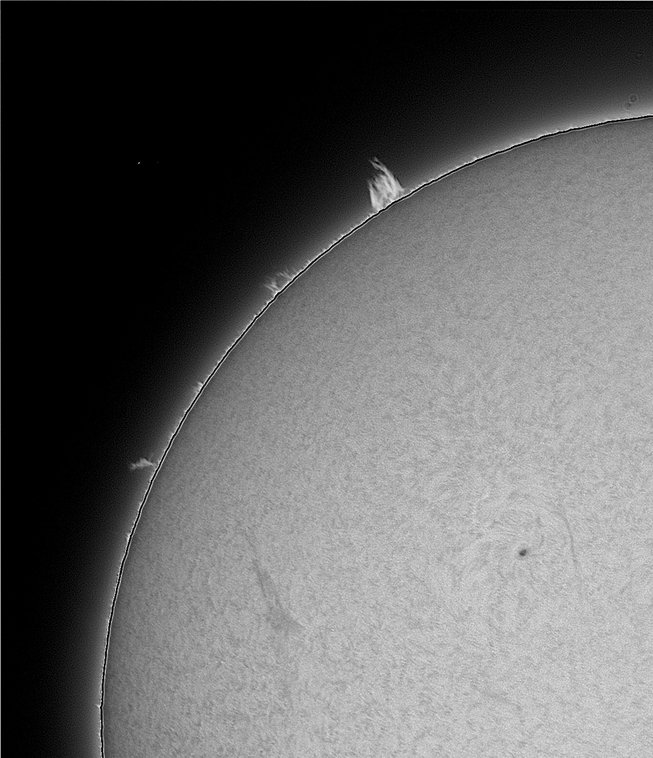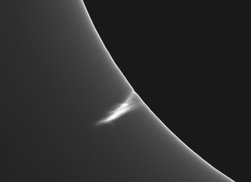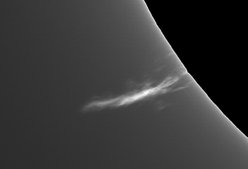Galaxies for Fun Astronomical CCD photos on peculiar galaxies and other astronomical stuff.
www.galaxies.se - by Ivar Hamberg
The Sun in H-alpha:
There are lots of phenomena that can be viewed on the sun in H-alpha. I started using a small 60 mm solar telescope for observations, and a Skyris 274C camera for photography. More recently, I have used an ASI183MM camera and double stacking on the 60mm scope. Also I am using a 90mm William Optics refractor equipped with a 90mm ERF filter and a Quark Chromosphere H-alpha filter. The most recent addition is a 115mm APO with a 110mm Baader ERF filter. The focal length is 800mm.
Active Sun - February 11 2023:
The Sun is almost exploding in active groups, sunspots and flares. To the left is AR 3220, AR3217 and tiny AR3219. To the top left is AR3221. Center right shows AR3214. At top right is the AR3213 group and to the far right of this is AR3222. At bottom right is AR3208. The photo is a mosaic of 5 exposures.
Equipment: 90 mm William Optics, Quark H-alpha Chromosphere filter.
Exposure: 5 photo mosaic with ASI183MM, cropped to 3600x2400 each. SharpCap 4.0. Each exposure is a 30 frame video file.
Processing: Registax6, Image Composite Editor
Date: 2023 Feb 11.
Flare in AR 3373 on July 21, 2023: This group was one of many groups visible on the sun during late July 2023. Here is a High Resolution study between 9.00 and 11.54 UTC. The first image in the sequence is with the Ha-filter turned OFF.
Basically, the OFF-filter view shows the PHOTOSPHERE.
The ON-filter view shows the CHROMOSPHERE.
North is up.
The video is from 7 images from almost 3 hours.
Time: 9.00-11.54 UTC
Instrument:
115mm APO, f.l. 800mm.
Baader ERF
Quark Chromosphere filter including 4.2x Barlow.
ASI183MM camera.
Sharp Cap, Registax6, MaximDL, EZGIF.
Animation of AR3359 on 2023-July-04: The sunspot group is shown with the H-alpha filter OFF and ON.
OFF -> The Photosphere
ON -> The Chromosphere
Time: 09.16 and 09.20 UTC
Instrument: 115 mm APO with Baader ERF, Quark-C, ASI183MM.
Process: SharpCap, Registax6, MaximDL, ezgif.
Flare in AR 3340 on June 26, 2023: This group was very active with several M class eruptions. North is up. The short video is for a 21 minute duration. I show it as forward-reverse.
Time: 12.17-12.38 UTC
Instrument:
115mm APO, f.l. 800mm.
Baader ERF
Quark Chromosphere filter including 4.2x Barlow.
ASI183MM camera.
Sharp Cap, Registax6, MaximDL, EZGIF.
The animated gif has unfortunately very limited resolution.
Eruption and Flare in AR 3088 on August 27, 2022: This group was extremely active with several M class eruptions. North is to the left. It is shown in two representations. The sequence covers 25 minutes at 12.55 to 13.20 UTC.
FLARES in AR3078 on August 17, 18 and 19, 2022: This group went crazy on August 17, 18 and 19, 2022. Several M and C class eruptions with bright flares occurred. Here are a few I observed:
August 18 at 11:10 UT. Large.
August 17 at 11:59 UT. Large.
August 19 at 10:59 UT. Tiny.
August 19 at 11:18 UT. Large.
August 19 at 13:50 UT. Large.
GIANT Prominence on August 04, 2022: This humongous prominence showed up on August 3 and 4. This is an image of the final evaporation of the giant feature.
August 04 at 13:42 UT.
AR3032 on June 15, 2022: This group is very complex and full of details. This is the first photo with a new setup using a 90mm refractor and a Quark Chromosphere filter. Detail in BW some 24 min later.
AR 3031 and AR 3037 on June 16, 2022: Another showpiece with fine details. 90mm refractor.
Solar cycle 25:
The solar cycle 25 has given several interesting displays. Here is AR2938 and AR2936 on Feb1 2022. Also, a giant prominence showed up on Feb 5. Photographed in Nice, France, with a double stacked 60mm Coronado solar telescope.
Giant Solar Prominence on September 11, 2021:
This giant solar prominence was quickly developing on September 11, 2021. A day later it had evaporated and left the chromosphere. I posted it on spaceweather.com.
Also, Active Regions AR2866 and AR 2868 were quite intense. The much weaker AR2869 is below them. Photographed in Nice, France, with double stacked 60mm Coronado. (three different representations.)
AR2835 and AR2836 on June 28, 2021:
The solar activity has been low during recent months in 2020 and 2021. Now, the activity is slowly picking up. Here we can see filaments between the two sunspots in the upper group, AR2835, as well as some filaments developing in the group at lower right, AR2836.
Prominences on September 9, 2018:
There were a good number of eruptive prominences on the eastern limb on Sep 9. I followed the rapid development during an hour.
First: 08:51 UT
Second: 09:51 UT
Solar flare region, AR 2713, June 17, 2018:
This active region showed an outbrake on June 27, 2018. The bright areas erupted during this day.
Partial Eclipse of the sun on August 11, 2018:
The partial eclipse was only a few percent at maximum, as seen from the Stockholm area. It was seen from about 10:50 to 11:30, local time. Nevertheless, the eclipse made a nice appearence together with the clearly seen prominences. At the time of the eclipse, there were no sunspots, but a few active filaments could be seen in H-alpha. These images have north up, east to the left.
Solar prominences on July 8, 2017. The sunspot on the solar disc is no 2665. It shows high activity and is starting to produce flares. The prominences at the limb are hugh and bright. These two images have North to the right, and East is up.
Solar prominences on July 15, 2017. The sunspot on the solar disc is AR no 2665, same as above, but a week later. The seeing was good, so a lot of delicate structures can be seen. North up, East to the left.
Solar prominences on July 30 and 31, 2020. This humongous prominence developed rather fast and blew off the sun into space on mid-day July 31. Images from:
July 30 09:00 UT
July 31 8:08 UT
July 31 13:28 UT
Published on Spaceweather.com
